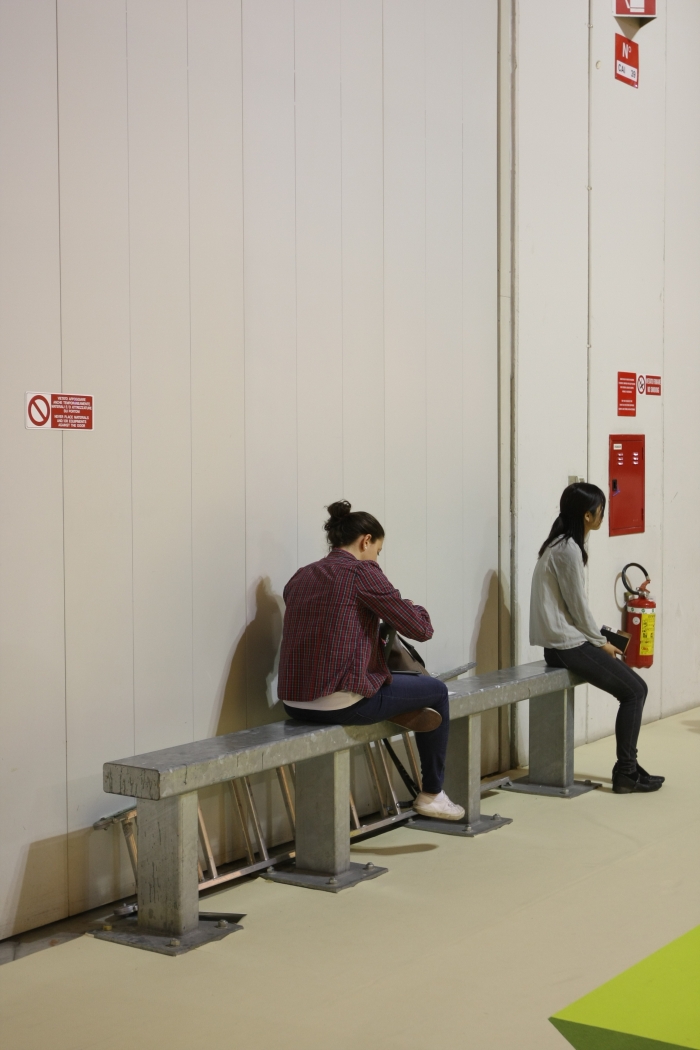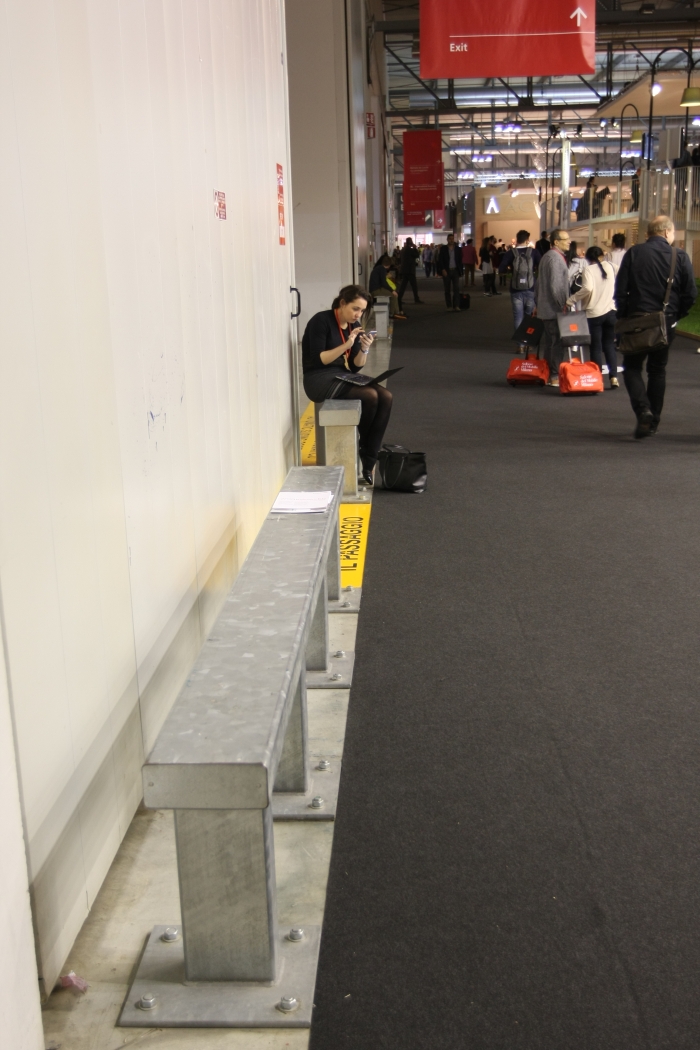Architecture | Exhibitions and Shows | Fuorisalone | Fuorisalone Milan Design Week | Milan Design Week | Product | smow
For us one of the few genuine joys of Milan Design Week is observing visitors to the furniture fair perching on the simple metal benches to be found on the peripheries of the exhibition halls, benches which resemble safety barriers more than public seating
Our joy stemming not from the irony that they find themselves surrounded by chairs in whose collective development millions of Euros have been invested, but because it is the most poetic reminder that a chair is a purely functional object.
Historically this essential truth was hidden by a fondness for ornamentation and outlandish visual aesthetics, adornments created and employed to impart a sense of value and status, for chair and sitter, before, thanks largely to the likes of Michael Thonet, J. & J. Kohn et al we learned to appreciate the enticing simplicity of reduced chair design. And while post World War I the functionalists may have elevated the functional to a chair's raison d'etre, form follows function does nothing more than create a conflict between two aspects of a chair's character, creates a "with us or against us" scenario, and singularly fails to recognise that "function" isn't a fixed given but is a matter of perspective.
For the private individual a chair must provide somewhere to sit, be that in in the living room, the kitchen, garden, in the home office, on the balcony........ And that, ideally, in a degree of comfort.
Similarly, industry and commerce need chairs which allow their customers and clients to sit, generally however in more fleeting situations, be that, for example, in a restaurant, theatre or bar, in the waiting areas of private or public institutions, in a museum, at an airport, railway station or post office; and where thus flexibility is every bit as important as comfort. If not more so.
Then there are the real speciality areas, hospital chairs, orchestra chairs, school chairs, or of course office chairs.
Furniture retailers need chairs which meet these customer wishes and which in addition offer them an argument with which to convince the customer that this or that chair is exactly the one they need, the chair functioning as it does as an important source of income for retailers. And while yes aesthetic arguments are often employed in such cases, this commercial function of a chair is in fact realised by other factors such as, for example, the choice of materials, aspects of the construction, durability, ergonomic factors, ecological considerations or historical associations.
Manufacturers meanwhile need chairs which allow them to achieve and offer all of the above while at the same time allowing them to maximise their profitability and company profile, a function of a chair which requires them being, for example, light so as to reduce distribution costs, particularly innovative in their construction or mix of materials so as to set the manufacturer apart from their competitors or cost effective to produce and that in a way which allows for later modifications in material and/or colours without the need to invest heavily in new machinery.
That the above functional requirements must not only be additively combined and aggregated in any given product, but that evolving social, cultural, technological and legal considerations continually allow for and force the development of new solutions, is of course the reason why a furniture fair such as Milan is awash with chairs.
However, the vast majority of the chairs in Milan are unnecessary, largely because their creators have either misinterpreted, or perhaps better put misjudged, the functional focus and created something which fails to tick enough of the requisite boxes and which thus although it may look "good", fails to meet the functional demands of a contemporary chair intended for mass production and distribution.
And a chair is only necessary when it meets its functional demands.
A fact beautifully illustrated by those weary fair visitors resting on bare metal bars.


